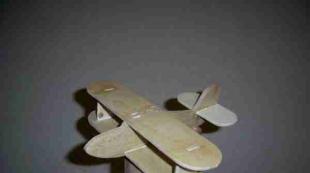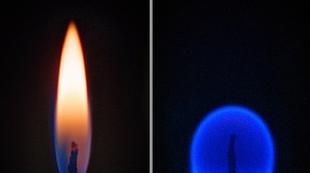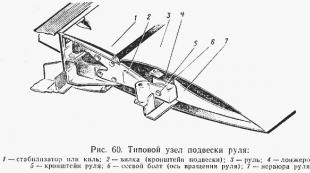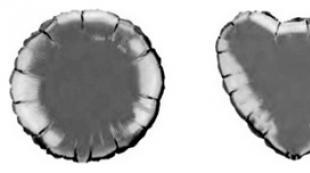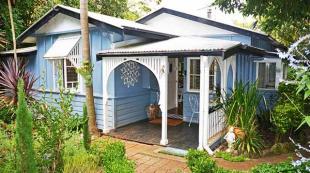Where is the flush button in an airplane toilet? How the airplane toilet works and what you need to know before using it. Where is the toilet on the plane?
If you've never flown but are planning to, you might find this photo guide useful.
Why did I decide to do it? Firstly, when I first got there, I probably spent a minute or more trying to understand everything. What if there’s a line outside the door? Secondly, having already flown 1-2 times a year, I saw that not everyone who used the toilet before me knows how to do it.
1. During a flight, if you want to stay healthy, you need to drink water (or other non-alcoholic drinks). It is also advisable to go to the toilet, even in order to stretch the body that has been sitting for too long.
The toilets are very small, smaller than in trains, so I don't know how people who weigh 150 kg use them.
The toilet is open when the "fasten seat belt" sign is not lit. A year ago we flew from Paris to Kiev, there was turbulence almost all the time, sometimes quite strong, and the toilets were closed for almost the entire three and a half hours, opening occasionally, so there was a queue.
Now on all four flights (Kiev-Paris-Valencia and Valencia-Amsterdam-Kyiv) there was almost no turbulence, and if there was, it was such that seat belts were not fastened.
In this photo you see a toilet, and above its lid there is a folding table for changing babies. (By the way, airlines and airports do everything to make it comfortable to fly with them, the only problem is takeoff and landing, but our daughter, when flying with a 5-month-old baby, found a way out of the situation). Bottom right - disposable toilet covers. Top right - napkins. There is toilet paper under the sink.
Do you see there is soapy water in the washbasin? - The previous passenger does not know what I will tell you next.
2. Above the tap on the left is liquid soap, on the right are paper towels. If you are flying from a foreign country to a foreign country, and there are no signs in Ukrainian, keep in mind that they are all standard, i.e., they ask you to wipe your hands, drain the water from the sink (using the lever on the faucet), and We wiped the sink with a used napkin.
How to open the tap? Usually by pressing where it says Push. 
3. You can remember the word seatcovers, it will be useful in other public toilets. 
4. Naturally, you need to wash it off after yourself. We don’t throw anything but toilet paper into the toilet. We press the blue button, and do not try to press it a second time, if it does not react immediately, after 2-3 seconds. With a loud sound, flushing occurs with a small amount of water and compressed air. 
5. Everything is clear here. For those who don’t understand Ukrainian, “paper towels” are “paper towels”. 
6. Under the sink there is a container for waste, including used napkins.
Airplane toilets are a very important comfort feature, especially on long flights. Let's figure out exactly how they work and how to use them correctly.
Are there toilets on planes?
Of course, even the smallest passenger Airbus has a toilet. This is a necessity for a comfortable flight of passengers to their destination. The restroom is equipped with sewerage and water, which is needed for personal hygiene. The toilet itself is quite small in size. It contains a toilet, a sink, a bin for used toilet paper and other hygiene products, and some also have boards for changing babies. Special children's mini-tables recline and are fixed if necessary. Some modern types of aircraft also have toilets for the disabled.

How it works?
Many people wonder how the toilet on an airplane works. As a rule, these are dry closets, all waste from which is collected in special tanks. The volume of these tanks can vary - from 115 to 270 liters. To prevent the unpleasant odor from spreading throughout the cabin, special chemicals are added to this container to disinfect the water and eliminate stench. The waste cargo remains on the aircraft throughout the flight. Some people think that after flushing, all sewage goes into open space, but this is a mistaken opinion. The tank or reservoir, which is gradually filled, is then removed, transported and disposed of.

What problems might arise?
Sometimes airplane toilets break down. The main cause of trouble is the human factor. Someone, unknowingly, on purpose or accidentally, may drop something into the toilet. If this thing turns out to be large, then aircraft technicians have a lot of work. After all, this is not home plumbing that can be quickly dealt with and the issue resolved in a few minutes. This is a serious system, the slightest malfunction of which puts it out of action for a long period of time. Therefore, in the toilets there are signs in large letters stating that you need to be extremely careful, and there is a trash container for used diapers and feminine hygiene products, which you are strongly advised to use.
When the plane arrives at its destination, a car with a large corrugated hose pulls up without slowing down. It is connected to the opening of the tank, in which waste was collected throughout the flight. At this point, an unpleasant problem may also arise. If the connection is incorrect or poor-quality, the hose may break and the entire contents will simply flow onto airport workers. Another problem can arise if something sticks to the walls of the tank or reservoir. In this case, a serious flushing of the entire system will be required. Therefore, before you put anything prohibited in the toilet, remember, on the plane. And think how much trouble and inconvenience this can cause.

Terms of use
If you are flying for the first time and do not yet know how the toilet on the plane works, do not hesitate to ask the flight attendants about it. They will tell you how to properly use a toilet at height:
- The door opens by pressing the handle located directly below the Lavatory sign.
- If the toilet is already occupied by someone, the sign is highlighted in red. If free and available - green.
- How does the toilet work on an airplane? A little different from what we are used to. Therefore, you can visit it only during the flight after gaining altitude. It is strictly prohibited to use it during takeoff and landing. Also, if you are advised to take your seats, for example in case of turbulence, you should leave the toilet immediately.
- It is recommended to visit restrooms on airplanes 10 minutes before eating and drinking or 15 minutes after eating.
- It is forbidden to throw paper, pads and other hygiene products into the toilet itself. For this purpose, special bins are installed in each toilet.
- Some toilets are equipped with a special folding board for changing small children. Which airplane toilets have it, check with the flight attendant, especially if you are traveling with a small child.
- Since waste is flushed using a directed powerful jet of air, before this procedure it is necessary to check whether the toilet lid is lowered.
- Smoking is prohibited in the toilet, as there is a special fire alarm that goes off even with the slightest smoke.

Where does the noise come from when draining?
Some passengers may feel that when the water in the airplane toilet is flushed, a characteristic noise is heard, similar to a short-term depressurization in the cabin. However, this is only an illusion, since the waste is not thrown out into the air at all, but is sent to a special sealed tank. In addition, drainage with water is not performed due to the fact that it is extremely uneconomical. Therefore, waste products are removed by a powerful directed air flow, which is why a sound similar to depressurization occurs.
Where are the toilets located on different brands of planes?
On different Airbuses, the restrooms are located in different places. Their quantity also differs:
- The popular Boeing 737, as well as the TU-154 and A-320, have a total of three toilets. One of them is located at the entrance to the plane, the other two are at the tail.
- The huge Boeing 767 has as many as five toilets. Two of them are in economy class. There is one at the beginning of the business zone. Two more are in the passage between them.
- Toilets on Boeing 747 type aircraft are located two at the end and at the beginning of the Airbus. Four are in the middle and three more on the second deck. There are eleven of them in total.

A little history
In various countries, when designing toilets on military aircraft, sewerage and water supply systems were invented. Moreover, most of these aircraft in the USSR and the Russian Federation do not have restrooms. For small needs, each crew member has a special urinal that is hermetically sealed. At the same time, there is “largely” nowhere to go. Some military transport aircraft still use regular buckets and plastic bottles. Now you know almost everything about how the toilet on an airplane works and what the rules are for using it. Fly with pleasure!
On a long journey, it is important for a person to be able to satisfy his natural needs. For this reason, you always need to know where these establishments are: food service, rest area and toilet. Below you will find out the answers to the following questions: is there a toilet on the plane, where is it located, how does it work and how to use it correctly.
Where is the toilet on an airplane?
If you will be on a flight for more than 2 hours, then this issue is extremely important for you. Different planes have different numbers of cabins and their locations:
- There are three toilets on Boeing 737, A-230 and Tu-154 aircraft: two are located in the tail, one is at the entrance to the aircraft.
- There are five toilets on the Boeing 767: two between economy and business classes, one at the beginning, two in the middle of economy class.
- There are eleven toilets in the Boeing 747: two at the end and at the beginning of the plane, three toilets on the second deck, four in the middle of the cabin.
Depending on the airline, aircraft model and year of manufacture, the number of toilets and their location can vary significantly.
How does the toilet work on an airplane?
Toilet on an airplane

There is no need to worry that waste emissions from an airplane are the same as in a train. There are special tanks on board the plane where the toilet flushes. For example, the Tu-154 has tanks for the front toilet with a capacity of 115 liters and for the second one with a capacity of 280 liters, while the A-320 has only one tank with a capacity of 170 liters.
Cleaning an airplane toilet

There are differences in how lavatories work on different airplanes:
- In the A-320, flushing water comes from the aircraft's water supply system. Using a vacuum, waste is poured into a special tank.
- And in aircraft such as the Boeing 737 and Tu-154, the sewage system is closed and recirculating. Water is taken from a special tank, which is refilled immediately before the flight. When waste is washed off, the filter does not release large particles, and the liquid that has been filtered is sent for a second cycle. Chemicals are added to the tank to remove odor and disinfect the water. After the plane lands, the waste is drained and removed.
Toilet on an airplane

As you can see, the principle of operation of a toilet on an airplane differs from the toilets we are used to, which, for example, you can see in the online store buy-sanitation.rf.
How to properly use the toilet on board an airplane?
Toilet on an airplane

There are several simple rules:
- It is prohibited to use the toilet during take-off/landing.
- To ensure a good flush, before using the toilet, it is better to lay paper in it.
- First lower the lid and then press the flush button.
- Throw pads and diapers into the trash bins provided for this purpose.
- The toilet door can be opened using the handle from the outside, located under the “LAVATORY” sign.
- Try to go to the toilet 15 minutes after eating or 10 minutes before, as there is usually a long queue after eating.
- Do not use smoke-producing or hazardous products or smoke, as the smoke detection system may be activated and you will receive a fine (and you may be removed from the aircraft and placed under arrest).
Knowing where the toilet is located and how it works on the plane will help you feel comfortable during the flight.
A modern person who buys a plane ticket knows exactly what services he gets for the money spent. A more or less comfortable (depending on the class) seat, one or more meals, and of course, the opportunity to use the toilet. But such conditions on board aircraft were not always the case.
Historical reference
In the very first passenger planes there were no restrooms at all; people were asked to relieve themselves simply in buckets.
Over time, the first bathrooms began to appear, but they were not similar to the current ones.
The flush system was open until the 1960s, meaning waste was released outside the aircraft cabin.
On airplanes flying at high altitudes, to prevent depressurization in the cabin, a special airlock with two valves was installed on the pipe responsible for discharging waste, so to speak, “outside,” protecting the system from huge differences in pressure.
How does a modern airplane toilet work?
Nowadays, a system is used that includes containers where waste from the toilet goes when flushed on an airplane.
Accordingly, you can safely use the toilet, and frightening stories about how people were sucked in by a vacuum are fairy tales, nothing more, and there is nothing to worry about, unless, of course, you press the flush button while sitting astride the toilet. When you press this button, an unusually loud noise appears, which is associated precisely with the opening of the valve. This creates a pressure difference between the toilet and the tank.
This operating principle is now appearing in new generation trains.
These drain tanks are different for all models. For example, the Tu-154 aircraft has two tanks - volumes of 115 and 280 liters, and the A-320 has one tank of 170 liters. These are the containers where the urine and feces of passengers are removed from the aircraft cabin.
Also, many aircraft have different operating systems for the lavatories.
Some, like the A-320, use the same water for draining that comes from the tap, and are generally used in the general water supply system, and waste is sucked into a designated tank using a vacuum lever.
And in other models of modern aviation, a closed system operates. For flushing, there is a special container in which water is filled before the flight. During the flight, people use the toilet, wash their achievements into another tank set aside for this purpose, and from there the waste, along with water, enters a special filtration system that separates large particles from the liquid, after which the liquid is purified, disinfected and disinfected with special chemicals , goes back to the flush tank.

Note! After purification in such systems, the water is safe as long as you do not drink it! You cannot become infected with anything, it does not smell, and will not harm your health in any way.
How many toilets are there in the cabin and where are they located?
Usually, flight attendants are required to inform you about the number of toilet rooms on board before or during the flight. If you listened and watched their presentation, then pay attention to the illuminated boards - they will tell you where the necessary rooms are located to alleviate the need.

As a last resort, you can call the flight attendant and clarify the information with her personally; it is important to ask the question correctly. Not “where is your toilet?”, because some people may not know the slang words, especially if the ship’s staff is foreign. You should politely ask where the toilets are located, and if there are several, where is the nearest one.
However, it is worth briefly going through the features of the various models and we will arrange them in descending order of the sanitary rooms on board:
- First place goes to the Boeing 747 - it has as many as eleven restrooms. Two at the beginning of the salon, two at the end, four in the middle, and three more on the second deck.
- The Boeing 767 takes second place with five toilets. One at the front of business class, two between business and economy, and one in the middle of economy.
- Boeing 737 - three toilets. Also sharing this place with it are the Russian Tu - 154, Yak - 42 and A-320. And they all have the same location: one at the entrance, two at the end of the salon.
- On board small aircraft, like the Yak-40, there is only one toilet per plane, since this model is not designed for a large number of passengers and long flights.
Of course, new planes are produced with the most comfortable seats on board, the number and location of toilets.

Important! Flight attendants are always notified of the location of the toilets. If you missed the greeting from the flight attendants, pay attention to the illuminated signs.
Where does waste go?
After examining the design of toilets in various aircraft models, it became clear that in modern restrooms waste does not disappear anywhere; it remains on board until the plane lands.
The only difference is that in some bathrooms the system does not separate waste and does not filter liquids, while in others there is filtration.
But in the end everything ends the same.
When the plane arrives at its destination, the tanks on the plane are emptied and taken away with the help of a waste disposal machine - this is where the feces from the planes end up.
Such different toilets
Depending on the class of the aircraft, the sanitary blocks differ in the level of comfort.
If in economy class it is a very small, cramped room, with a curtain door that is always scary to open and close, and everything inside consists of inexpensive plastic, then in business there is already a larger room, the door is stronger, and the mechanism is much more reliable.
The sink is made of stone, and overall the design details look much nicer.
In private planes, owners manage to create almost museums of natural needs, and some even prohibit staff from using the private toilet, as in the famous case when Formula 1 champion Lewis Hamilton was so furious that the pilot was using his toilet that he almost fired him .
If we talk about the differences between foreign and domestic manufacturers, then we can say that there is a gulf between them.
How to properly use the toilet on an airplane
These simple tips will help you avoid confusion when it comes time to use the restroom.
- To make solid waste easier to flush away - before using the toilet - you need to lay paper there.
- To avoid too loud noise and unpleasant sensations (with vacuum suction, discomfort may occur if you sit on the toilet while flushing), first rise, and only then close the lid, and only then flush.
- There is a trash can in the toilet for pads, tampons, and other garbage like bottles, tissue packs, etc.
- The water in the sink does not just drain out - you can only get rid of it by pressing a special button. This was done to save water and for convenience if you suddenly need to wash something.
- There is a glowing sign above the toilet door. When it lights up red, the cabin is occupied. When it's green, it's free. This is done so that passengers can see the necessary information from any end of the cabin.
What to do in airplane toilets is prohibited
- The very first thing you should not do is use the toilet during takeoff and landing. A large pressure drop occurs as the plane sharply gains altitude or descends, and many at this time have a feeling of falling or dizziness. It’s better to sit out this moment in the seat, exhale, and only then, when the flight is stable, go to meet your needs.
- Although some toilets still have ashtrays, this does not mean that you can smoke there. You can be fined for this, and in general, it can cause negativity, which is completely unnecessary during the flight. It is better to spend several hours without a cigarette than to create conflict situations in a confined space.
- Do not throw solid objects into the toilet; this may damage the water supply or flushing system, and no passenger will be able to use the restroom for the rest of the flight, which may lead to discomfort and unpleasant situations.

In addition, many passengers travel with small children who find it difficult to control their needs.
In case of any difficulty, flight attendants will always help passengers. Don't be shy to ask them questions.
An airplane toilet is a sanitary and technical equipment that provides citizens with a comfortable flight. There is a bathroom on board any airliner. It is important to know how to use the toilet to avoid accidents.
How the bathroom works
The toilet on an airliner is small in size. The following equipment is located here:
- toilet;
- sink;
- a specific water supply system that supplies water to the washbasin tap and toilet cistern;
- sewer outlets;
- bin;
- folding changing table.
The location of the toilet on an airplane depends on the type of airliner. In Russia, passengers are transported by vehicles of imported and domestic production. In the first case, these are Boeing and Airbus, in the second, Tupolev and Ilyushin. In each of them, the sanitary room is located differently.
Foreign airliners are equipped with toilets, the number of which ranges from 3 to 11. The largest number of toilets is located in the double-deck Boeing 747. There are 11 sanitary and hygienic rooms.

The location is:
- there are 3 bathrooms on the upper deck;
- on the lower deck there are 4 toilets located in the middle of the salon;
- in front and behind the salon there are 2 sanitary and hygienic rooms.
The Boeing 767 is equipped with five toilets, arranged as follows:
- in business class – 1;
- in the middle of the cabin - 2;
- in the transition between business and economy class – 2.
Airbus brand 330 has 8 toilets on board. Location:
- in business class – 2, one at the beginning and end;
- transition between two classes - 4 bathrooms;
- at the end of the airliner - 2.
The Airbus 320 is equipped with three sanitary and hygienic rooms. Location:
- at the end of the airliner - 2;
- at the beginning of the plane - 1.
On domestic aircraft
The Tupolev airliner modification 204-100 is equipped with four sanitary and hygienic rooms. Location:
- in front of the cabin - 1;
- in the middle of the airliner - 1;
- at the end of the side - 2.
Look at the photo to see how the bathrooms are located in the Tupolev 204-100 airliner.

Other models of domestic vehicles are equipped with three toilets.
Terms of use
- you cannot visit the bathroom when the airliner is taking off and landing;
- Before flushing the toilet, lower the lid;
- It is forbidden to throw garbage into the toilet; trash cans are designed for this;
- You cannot smoke in the toilet to avoid setting off the alarm.
Violation of the rules for using the sanitary and hygienic room results in penalties.
Smoking in the toilet on board an aircraft is punished especially harshly. On domestic flights, the act is subject to a fine of 500 to 1,500 rubles; on international flights, the penalty amount is up to 18,000 rubles.
Principle of operation
Externally, the sanitary and hygienic room on an airliner is no different from a regular toilet. However, the bathroom on an airplane has some technical features.
In the sanitary and hygienic room there are two containers intended:
- one for clean water;
- the second is for waste accumulation.
Clean water is supplied as follows:
- to the kitchen area;
- into the sink faucet;
- into the toilet flush cistern.
The volume of containers depends on the make of the aircraft, the number of sanitary and hygienic rooms and the number of seats for passengers. It can be 120, 280 liters and so on.
How the toilet on an airliner works is shown in the video.
Drain method
Typically, airline toilets use a vacuum flush. The waste in the toilet, after pressing the corresponding button, is sucked into the tank using a strong air flow. The process is accompanied by characteristic sounds.
Some airplane toilets are equipped with a filtration system. This allows the water used for flushing to be purified and reused to flush the toilet. However, in most cases, the water goes into a special tank along with the waste.
Among inexperienced passengers, there is an opinion that when flushing the toilet, there is a risk of suction to the drain hole after pressing the corresponding button.

However, this is just a myth. There was no suction to the drain hole even on airliners with an open bathroom system. In modern aircraft this is even more impossible.
Post-voyage service
Where does everything go from the toilet after a flight - many passengers ask. Many travelers believe that sewage is discharged during the flight. This statement is not without meaning.

The fact is that the first airliners were not equipped with bathrooms, but after sanitary and hygienic rooms were installed on board, they were equipped with an open-type system. This means that the waste was thrown out during the flight.
Modern aircraft are equipped with a closed type system. This means that sewage accumulates in the tank and is stored until the end of the flight.
The airplane toilet has a special drain hole that allows waste to be pumped out of the tanks.
The procedure is carried out using a sewage disposal machine. After this, the waste is transported to the airport landfill or other places designated for sewage disposal.
After this, the toilet system is flushed. For the procedure, water with chemical components is used, supplied under high pressure. Before the next flight, the bathroom tanks are refilled with clean water.
A toilet on an airplane is a necessary sanitary and hygienic room that allows you to normally endure a flight, especially if it lasts for several hours. It is important to use the bathroom correctly to avoid unpleasant situations.

